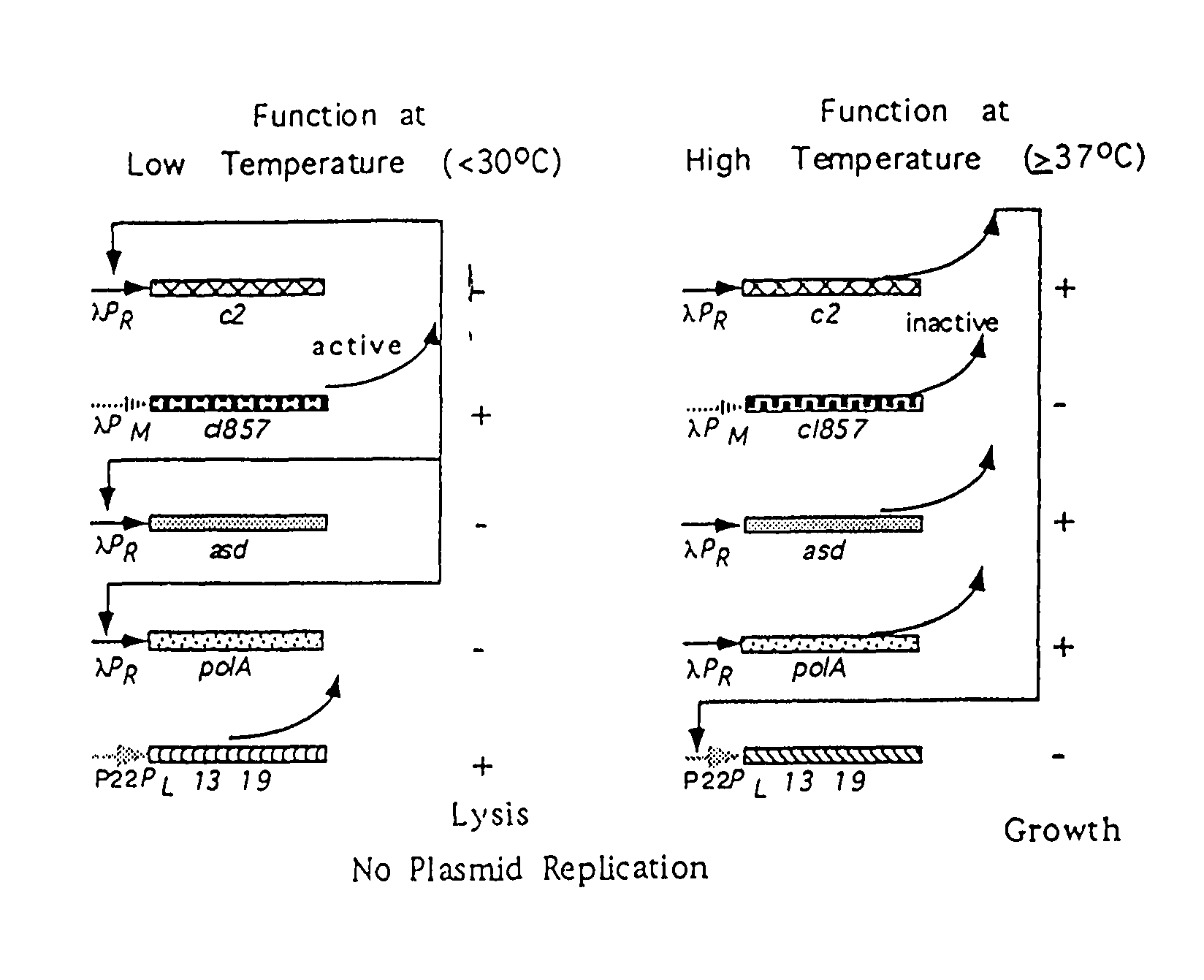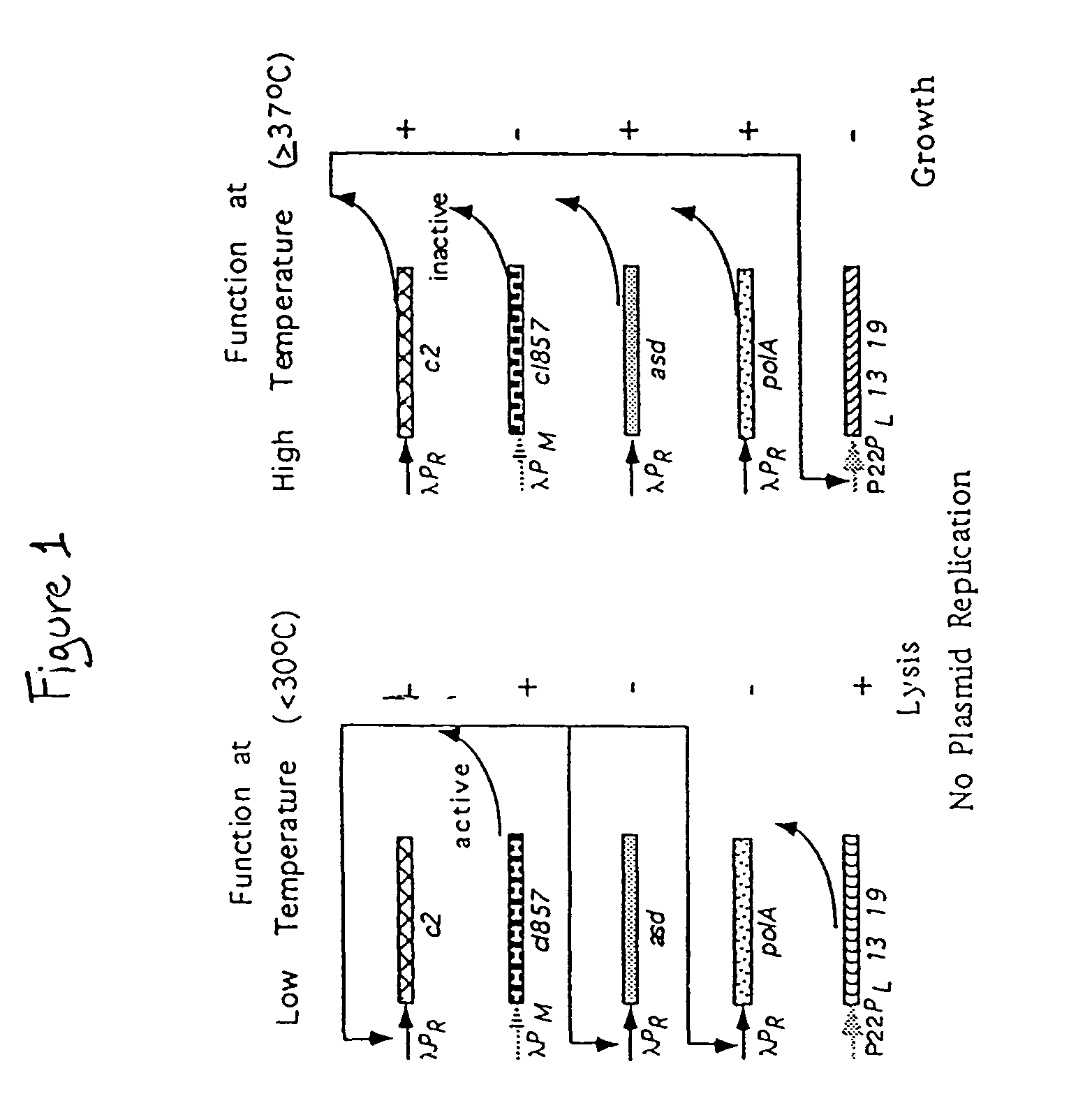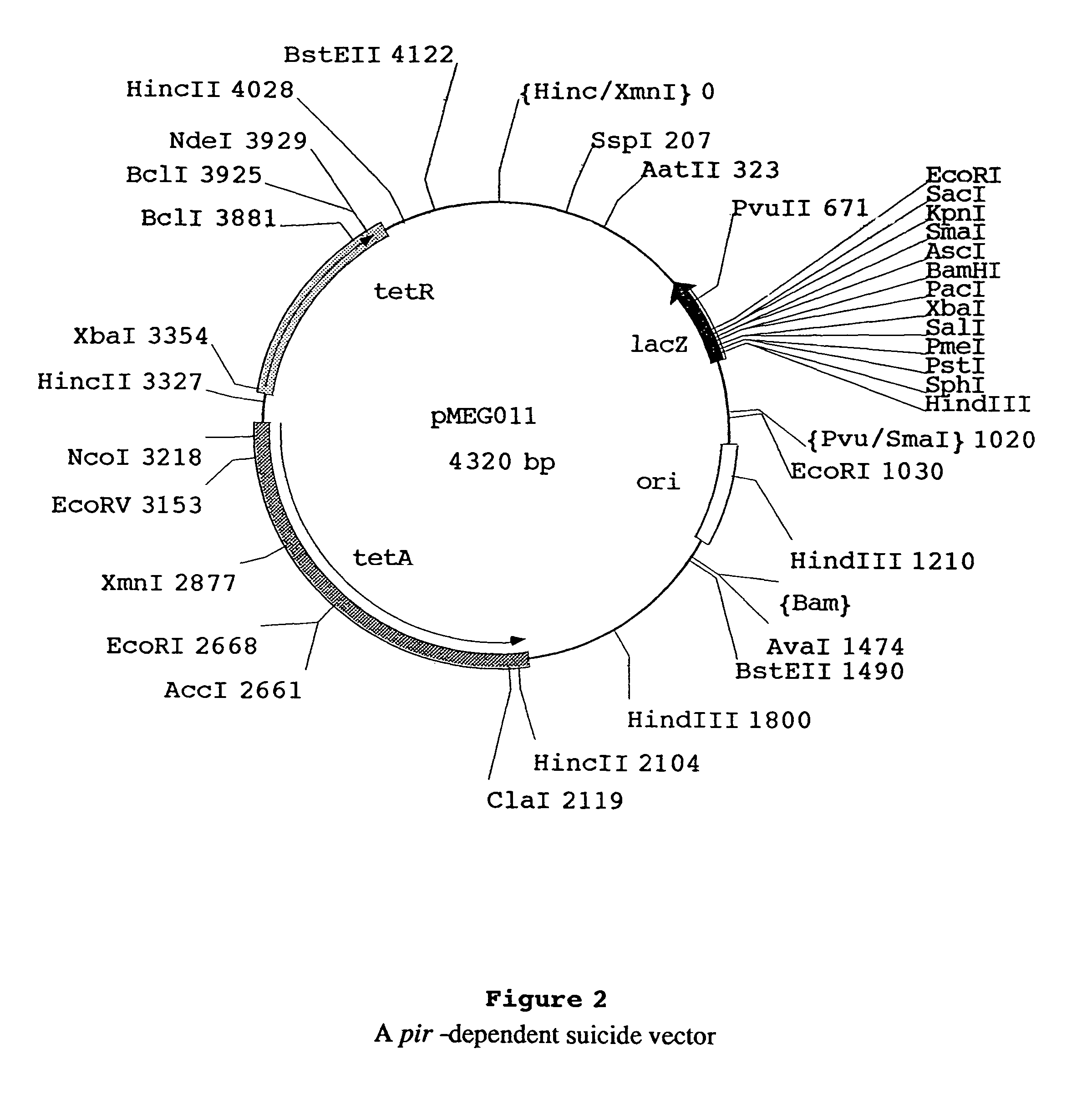Recombinant bacterial vaccine system with environmentally limited viability
a technology of recombinant bacterial vaccine and environmental protection, which is applied in the direction of microorganisms, biocide, antibody medical ingredients, etc., can solve the problems of loss of vectors and cell death
- Summary
- Abstract
- Description
- Claims
- Application Information
AI Technical Summary
Benefits of technology
Problems solved by technology
Method used
Image
Examples
example 1
Construction of a Plasmid Based Thermoregulated Environmentally Limited Viability System
[0095]The methods used to produce the components of the ELVS illustrated in FIG. 4 employed standard molecular cloning techniques. The ELVS depicted in FIG. 4 consists of two main components. The first component is the ELVS vector which combines the application of a temperature regulated essential gene, asd, with the temperature regulated lethal genes, lys13 and lys19, oriented in a manner to provide additional regulation by antisense RNA for both essential and lethal genes. The second component is the ELVS host required to maintain the ELVS vector, which for the S. typhimurium examples used the host MGN-392, possessing a defined asd deletion with a thermosensitive cI857 and c2 repressor cartridge insert.
[0096]The ELVS expression vector pMEG-104, was constructed by the assembly of six individual components consisting of 1) the S. typhimurium asd gene, 2) the bacteriophage lambda promoter left to ...
example 2
Restricted Transfer of Environmentally Limited Viability Vector DNA to Other Bacterial Hosts
[0107]This example demonstrates the inability of bacterial hosts not containing the cI857PRc2 cartridge to maintain the Environmentally Limited Viability System vector, even at permissive temperatures. During the construction of pMEG-104, as described earlier, the vector pMEG-100, containing a kanamycin resistance gene, was produced (FIG. 5). Vector pMEG-100 and the tetracycline resistance plasmid pYA232 were co-purified from MGN-399 (Table 1). Vector pYA232 has a low copy-number pSC101 replicon that is compatible with the p15A origin of replication present on pMEG-100. The pool of plasmid DNA isolated from MGN-399 was then electroporated into an Asd− S. typhimurium host, χ3730, lacking the c2 repressor gene necessary for repression of the P22 lysis genes. In this strain, the lysis genes on pMEG-100 should limit the transformability by pMEG-100. The same pool of plasmid DNA was also electropo...
example 3
Construction of a Temperature-Regulated polA Host
[0109]This example describes the design of a Δasd Environmentally Limited Viability System in which the effectiveness of the Environmentally Limited Viability System is further ensured by employing a temperature regulated polA gene. The chromosomal polA gene has been altered to be expressed at 37° C. but not at temperatures below 30° C., thus preventing further replication of polA-dependent replicons containing the essential asd gene at the non-permissive temperature. As described above, the replication of plasmids with the p15A, pBR and pUC origins of replication are dependent on DNA polymerase I. These replicons are widely used in cloning vectors. The inability of these polA-dependent plasmids to replicate at temperatures below 30° C. will then result in plasmid vector loss from a population of cells growing at temperatures below 30° C. This will result in a loss of the ability to synthesize Asd, which in turn will reduce, and ultim...
PUM
| Property | Measurement | Unit |
|---|---|---|
| temperatures | aaaaa | aaaaa |
| temperatures | aaaaa | aaaaa |
| temperatures | aaaaa | aaaaa |
Abstract
Description
Claims
Application Information
 Login to View More
Login to View More - R&D
- Intellectual Property
- Life Sciences
- Materials
- Tech Scout
- Unparalleled Data Quality
- Higher Quality Content
- 60% Fewer Hallucinations
Browse by: Latest US Patents, China's latest patents, Technical Efficacy Thesaurus, Application Domain, Technology Topic, Popular Technical Reports.
© 2025 PatSnap. All rights reserved.Legal|Privacy policy|Modern Slavery Act Transparency Statement|Sitemap|About US| Contact US: help@patsnap.com



